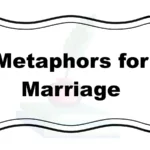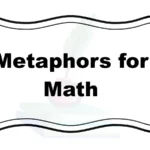Finding the right words to describe colors can add so much depth and warmth to your communication. Colors aren’t just visual experiences—they evoke emotions, memories, and feelings that words can beautifully capture.
Using similes to express colors can help paint vivid pictures in the minds of others, making your messages feel more personal and meaningful. Whether you’re describing a sunset, a mood, or a favorite outfit, these 25 similes for colors will inspire you to speak with empathy and creativity.
What Does “Similes for Colors” Mean?
A simile is a figure of speech that compares two things using “like” or “as” to create a vivid image. When we talk about similes for colors, we are using comparisons to describe colors in a way that connects them to familiar objects or experiences. This helps the listener or reader understand the color in a more relatable and emotional way.
When to Use “Similes for Colors”
You can use similes for colors in many situations:
- When writing poetry or stories to make descriptions more engaging
- In conversations to express feelings or impressions warmly
- In art or design to describe hues with more personality
- When teaching children about colors in a fun and imaginative way
- Anytime you want to add a touch of creativity and emotion to your words
Pros and Cons of Using Similes for Colors
Pros:
- Makes descriptions more vivid and memorable
- Helps express emotions and moods linked to colors
- Enhances creative writing and storytelling
Cons:
- Overuse can make writing feel flowery or exaggerated
- Some similes may not be universally understood
- Can sometimes distract if not used appropriately
1. As red as a ripe apple
Definition: Compares a bright, vivid red color to the familiar red of a ripe apple.
Explanation: This simile evokes freshness, health, and natural vibrancy.
Scenario Example: “Her cheeks were as red as a ripe apple after running in the cold.”
Best Use: Describing bright, cheerful red shades.
Tone: Friendly, warm, and natural.
Other ways to say:
- Red like a juicy cherry
- Red as a firetruck
- Red like fresh strawberries
2. As blue as the ocean
Definition: Likens a deep or clear blue color to the vastness of the ocean.
Explanation: This simile conveys depth, calmness, and endless beauty.
Scenario Example: “His eyes were as blue as the ocean on a sunny day.”
Best Use: Describing deep, peaceful blue tones.
Tone: Calm, reflective, and soothing.
Other ways to say:
- Blue like the summer sky
- Blue as a sapphire gem
- Blue like a forget-me-not flower
3. As white as freshly fallen snow
Definition: Compares pure white to the untouched whiteness of new snow.
Explanation: Evokes purity, freshness, and innocence.
Scenario Example: “The dress was as white as freshly fallen snow.”
Best Use: Describing clean, bright white shades.
Tone: Pure, serene, and gentle.
Other ways to say:
- White like cotton clouds
- White as milk
- White like a lily flower
4. As green as spring grass
Definition: Likens a vibrant green to the lush grass of early spring.
Explanation: Suggests growth, renewal, and vitality.
Scenario Example: “The meadow was as green as spring grass after the rain.”
Best Use: Describing fresh, lively green hues.
Tone: Energetic, hopeful, and natural.
Other ways to say:
- Green like emeralds
- Green as leaves in summer
- Green like fresh spinach
5. As golden as the morning sun
Definition: Compares a warm yellow or gold color to the sunlight at dawn.
Explanation: Evokes warmth, optimism, and richness.
Scenario Example: “Her hair shone as golden as the morning sun.”
Best Use: Describing warm, radiant yellow or gold colors.
Tone: Warm, uplifting, and glowing.
Other ways to say:
- Golden like wheat fields
- Yellow as a sunflower
- Gold like treasure
6. As purple as a ripe plum
Definition: Likens a deep purple color to the richness of a ripe plum.
Explanation: Suggests luxury, mystery, and depth.
Scenario Example: “The sky turned as purple as a ripe plum at dusk.”
Best Use: Describing rich, deep purple tones.
Tone: Mysterious, elegant, and lush.
Other ways to say:
- Purple like lavender
- Purple as grape juice
- Purple like a violet flower
7. As black as midnight
Definition: Compares deep black to the darkness of midnight.
Explanation: Evokes mystery, depth, and sometimes solemnity.
Scenario Example: “Her hair was as black as midnight.”
Best Use: Describing very dark or intense black shades.
Tone: Mysterious, intense, and dramatic.
Other ways to say:
- Black like coal
- Black as a raven’s wing
- Black like a stormy night
8. As orange as a pumpkin
Definition: Compares a bright orange color to that of a pumpkin.
Explanation: Suggests warmth, vibrancy, and autumnal cheer.
Scenario Example: “The leaves turned as orange as a pumpkin in the fall.”
Best Use: Describing bold, warm orange hues.
Tone: Cheerful, cozy, and energetic.
Other ways to say:
- Orange like a ripe tangerine
- Orange as a sunset sky
- Orange like marigold flowers
9. As pink as a blooming rose
Definition: Compares a soft or bright pink color to that of a rose.
Explanation: Evokes beauty, softness, and tenderness.
Scenario Example: “Her cheeks were as pink as a blooming rose.”
Best Use: Describing delicate or romantic pink shades.
Tone: Gentle, loving, and sweet.
Other ways to say:
- Pink like cotton candy
- Pink as a flamingo’s feathers
- Pink like cherry blossoms
10. As silver as moonlight
Definition: Compares a shimmering silver to the glow of moonlight.
Explanation: Suggests elegance, coolness, and magic.
Scenario Example: “Her necklace glinted as silver as moonlight.”
Best Use: Describing shiny, metallic silver tones.
Tone: Elegant, mystical, and calm.
Other ways to say:
- Silver like a star’s sparkle
- Silver as a sleek fish scale
- Silver like frost on leaves
11. As brown as rich soil
Definition: Likens a deep brown color to fertile earth.
Explanation: Evokes grounding, warmth, and life.
Scenario Example: “His eyes were as brown as rich soil.”
Best Use: Describing earthy, natural brown hues.
Tone: Warm, stable, and nurturing.
Other ways to say:
- Brown like tree bark
- Brown as roasted coffee beans
- Brown like autumn leaves
12. As turquoise as a tropical sea
Definition: Compares a bright blue-green to tropical ocean water.
Explanation: Suggests freshness, clarity, and exotic beauty.
Scenario Example: “The dress was as turquoise as a tropical sea.”
Best Use: Describing vibrant, refreshing blue-green colors.
Tone: Refreshing, lively, and exotic.
Other ways to say:
- Turquoise like a peacock feather
- Blue-green as sea glass
- Turquoise like lagoon water
13. As beige as sandy beaches
Definition: Compares a soft tan to the color of sand on a beach.
Explanation: Evokes calmness, neutrality, and warmth.
Scenario Example: “Her coat was as beige as sandy beaches.”
Best Use: Describing neutral, warm tan colors.
Tone: Calm, neutral, and comforting.
Other ways to say:
- Beige like light wood
- Tan as desert sand
- Beige like oatmeal
14. As crimson as blood
Definition: Compares a deep, intense red to the color of blood.
Explanation: Suggests passion, intensity, and sometimes danger.
Scenario Example: “His jacket was as crimson as blood.”
Best Use: Describing strong, passionate red shades.
Tone: Intense, dramatic, and passionate.
Other ways to say:
- Crimson like a rose petal
- Deep red as wine
- Scarlet like a flame
15. As lavender as a summer field
Definition: Likens a soft purple to lavender flowers in bloom.
Explanation: Evokes calm, sweetness, and gentle beauty.
Scenario Example: “The walls were painted as lavender as a summer field.”
Best Use: Describing soft, calming purple tones.
Tone: Peaceful, sweet, and gentle.
Other ways to say:
- Lavender like lilac blossoms
- Soft purple as wisteria
- Light violet like a morning mist
16. As coral as a tropical reef
Definition: Compares a pinkish-orange color to coral reefs.
Explanation: Suggests vibrancy, life, and tropical warmth.
Scenario Example: “Her lipstick was as coral as a tropical reef.”
Best Use: Describing warm, bright pink-orange hues.
Tone: Vibrant, lively, and tropical.
Other ways to say:
- Coral like seashells
- Pink-orange as sunset clouds
- Coral like flamingo feathers
17. As navy as a starless night
Definition: Likens a dark blue to the deep navy sky without stars.
Explanation: Evokes mystery, depth, and calm.
Scenario Example: “His suit was as navy as a starless night.”
Best Use: Describing very dark blue colors.
Tone: Sophisticated, calm, and serious.
Other ways to say:
- Navy like a deep lake
- Dark blue as midnight ocean
- Navy as stormy skies
18. As peach as a ripe fruit
Definition: Compares a soft orange-pink color to ripe peaches.
Explanation: Suggests softness, sweetness, and warmth.
Scenario Example: “Her cheeks glowed as peach as a ripe fruit.”
Best Use: Describing gentle orange-pink tones.
Tone: Soft, warm, and friendly.
Other ways to say:
- Peach like sunrise clouds
- Soft orange as apricot
- Peachy like delicate petals
19. As ivory as antique lace
Definition: Compares a creamy off-white to ivory-colored lace.
Explanation: Evokes elegance, warmth, and timeless beauty.
Scenario Example: “The curtains were as ivory as antique lace.”
Best Use: Describing warm off-white shades.
Tone: Elegant, classic, and gentle.
Other ways to say:
- Ivory like elephant tusks
- Creamy white as porcelain
- Off-white like vanilla
20. As charcoal as burnt wood
Definition: Compares a deep gray-black to charred wood.
Explanation: Suggests depth, strength, and a hint of mystery.
Scenario Example: “His jacket was as charcoal as burnt wood.”
Best Use: Describing dark gray or black tones with texture.
Tone: Strong, mysterious, and grounded.
Other ways to say:
- Charcoal like ashes
- Dark gray as storm clouds
- Graphite like pencil lead
21. As rose as a morning blush
Definition: Compares a delicate pink to the soft glow of dawn.
Explanation: Evokes freshness, innocence, and new beginnings.
Scenario Example: “Her cheeks were as rose as a morning blush.”
Best Use: Describing soft, warm pink shades.
Tone: Fresh, innocent, and gentle.
Other ways to say:
- Rosy like spring blossoms
- Pink like flushed cheeks
- Soft rose like peonies
22. As real as deep waters
Definition: Compares a medium blue-green to deep ocean water.
Explanation: Suggests calmness, clarity, and depth.
Scenario Example: “The sofa was as teal as deep waters.”
Best Use: Describing balanced blue-green hues.
Tone: Calm, sophisticated, and fresh.
Other ways to say:
- Teal like peacock feathers
- Blue-green as tropical seas
- Teal like glacial lakes
23. As amber is fossilized resin
Definition: Compares a rich golden-orange to amber resin.
Explanation: Evokes warmth, age, and natural beauty.
Scenario Example: “Her eyes shone as amber is fossilized resin.”
Best Use: Describing warm, glowing orange-yellow colors.
Tone: Warm, rich, and natural.
Other ways to say:
- Amber like honey
- Golden as autumn leaves
- Amber like candlelight
24. As magenta as vibrant blossoms
Definition: Compares a bright purplish-pink to vibrant flowers.
Explanation: Suggests boldness, vibrancy, and energy.
Scenario Example: “The dress was as magenta as vibrant blossoms.”
Best Use: Describing bright, eye-catching pink-purple hues.
Tone: Bold, energetic, and lively.
Other ways to say:
- Magenta like fuchsia flowers
- Bright pink as neon lights
- Purple-pink like bougainvillea
25. As beige as desert dunes
Definition: Compares a sandy tan to desert sand dunes.
Explanation: Evokes warmth, earthiness, and calm.
Scenario Example: “The walls were painted as beige as desert dunes.”
Best Use: Describing soft, neutral sandy colors.
Tone: Calm, neutral, and grounding.
Other ways to say:
- Beige like camel hair
- Tan as dry sand
- Soft brown like driftwood
Conclusion:
Similes for colors are powerful tools to add emotion, clarity, and personality to your descriptions. They help connect colors to familiar, relatable images that evoke feelings and memories. By using these similes thoughtfully, you can make your communication feel more warm, vivid, and meaningful. Whether you’re painting a picture with words or simply expressing your feelings, these colorful comparisons allow your messages to shine with creativity and care.
MCQs:
1. Which simile best describes a deep blue color?
a) As red as a ripe apple
b) As blue as the ocean
c) As white as freshly fallen snow
d) As green as spring grass
2. What does “as white as freshly fallen snow” commonly evoke?
a) Mystery
b) Purity and innocence
c) Passion
d) Energy
3. Which color is described by the simile “as golden as the morning sun”?
a) Red
b) Yellow or gold
c) Blue
d) Black
4. When would you best use “as green as spring grass”?
a) To describe a calm ocean
b) To describe lively, fresh green hues
c) To describe warm sunlight
d) To describe dark hair
5. What tone is usually associated with “as black as midnight”?
a) Friendly and warm
b) Mysterious and intense
c) Light and airy
d) Soft and gentle
6. Which simile suggests luxury and depth?
a) As purple as a ripe plum
b) As orange as a pumpkin
c) As beige as sandy beaches
d) As coral as a tropical reef
7. “As silver as moonlight” is best used to describe:
a) Bright red colors
b) Shiny, metallic silver tones
c) Deep green shades
d) Soft pink hues
8. Which simile evokes warmth and richness?
a) As charcoal as burnt wood
b) As crimson as blood
c) As golden as the morning sun
d) As navy as a starless night
9. What other way can you say “as pink as a blooming rose”?
a) Pink like cotton candy
b) Blue like the sky
c) Green like leaves
d) Black like coal
10. “As turquoise as a tropical sea” suggests:
a) Freshness and exotic beauty
b) Darkness and mystery
c) Softness and innocence
d) Warmth and comfort
11. Which simile would best describe a calm, neutral color?
a) As beige as sandy beaches
b) As magenta as vibrant blossoms
c) As crimson as blood
d) As coral as a tropical reef
12. “As amber is fossilized resin” usually evokes:
a) Coldness and clarity
b) Warmth and natural beauty
c) Mystery and solemnity
d) Energy and boldness
13. What is the best tone for “as rose as a morning blush”?
a) Fresh and innocent
b) Intense and dramatic
c) Bold and energetic
d) Mysterious and deep
14. “As charcoal as burnt wood” describes:
a) A soft pink
b) A deep gray-black
c) A bright yellow
d) A light blue
15. Which is a good alternative for “as magenta as vibrant blossoms”?
a) Magenta like fuchsia flowers
b) Beige like camel hair
c) Brown like tree bark
d) Ivory like antique lace
Answers:
- b) As blue as the ocean
- b) Purity and innocence
- b) Yellow or gold
- b) To describe lively, fresh green hues
- b) Mysterious and intense
- a) As purple as a ripe plum
- b) Shiny, metallic silver tones
- c) As golden as the morning sun
- a) Pink like cotton candy
- a) Freshness and exotic beauty
- a) As beige as sandy beaches
- b) Warmth and natural beauty
- a) Fresh and innocent
- b) A deep gray-black
- a) Magenta like fuchsia flowers
FAQs:
1. Why should I use similes to describe colors?
Using similes adds depth, emotion, and vivid imagery to your descriptions. Instead of simply saying “red,” comparing it to something familiar like “a ripe apple” helps your listener or reader visualize the color more clearly and emotionally connect to your message.
2. Are similes only used in creative writing?
Not at all. While they are popular in poetry and storytelling, similes can also be used in everyday speech, teaching, design, marketing, and even professional communication to make your language more relatable and memorable.
3. How do I know if a color simile is appropriate for my context?
Consider the tone and purpose of your message. If you want to sound warm, expressive, or artistic, similes are a great fit. But if your tone is technical or formal, use similes more sparingly or choose ones that align with your audience’s expectations.
4. What’s the difference between a metaphor and a simile?
A simile uses the words “like” or “as” to compare two things (e.g., as white as snow), while a metaphor directly states something is something else (e.g., her smile was sunshine). Similes tend to be more accessible and gentle, especially in descriptive writing.
5. Can I create my own color similes?
Absolutely! Creating your own similes is a wonderful way to express your personality and creativity. Just think of something that shares the same shade, emotion, or texture as the color you’re describing, and connect them using “like” or “as.”




